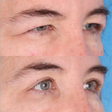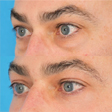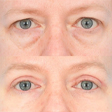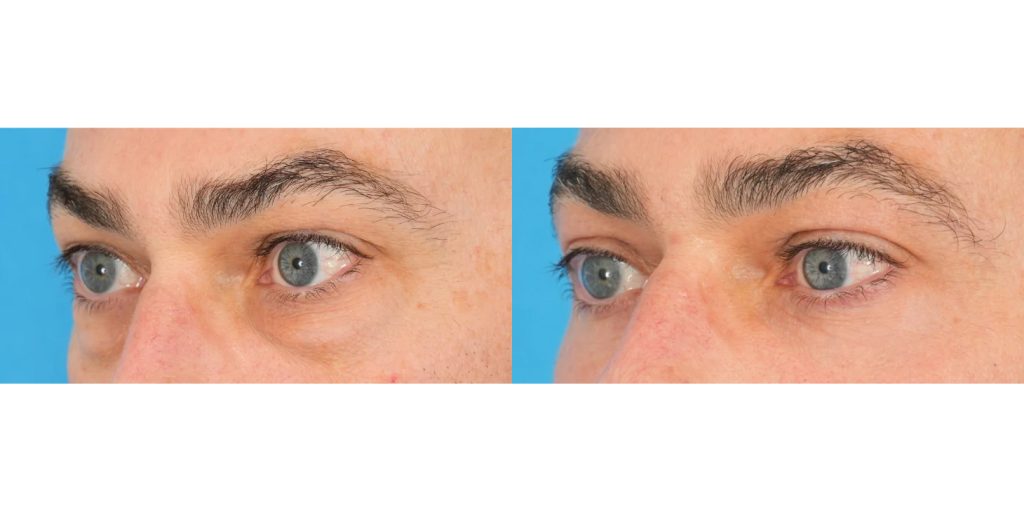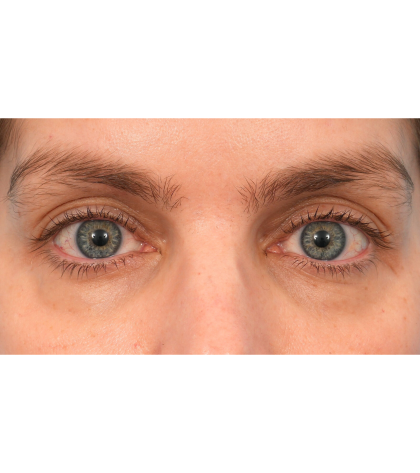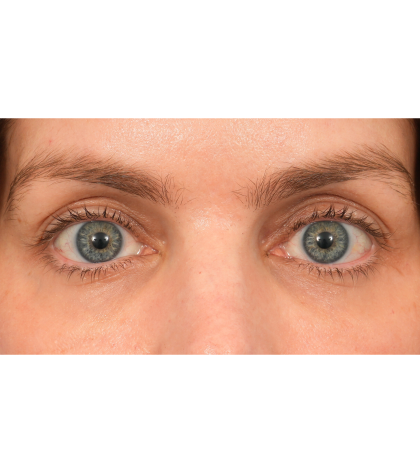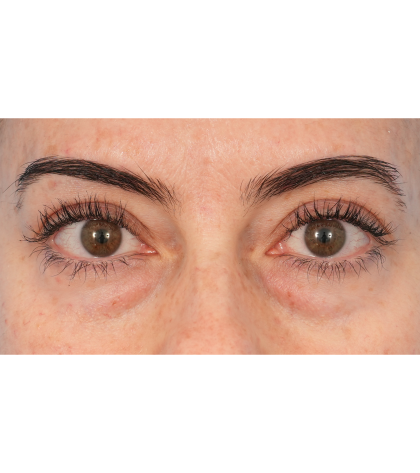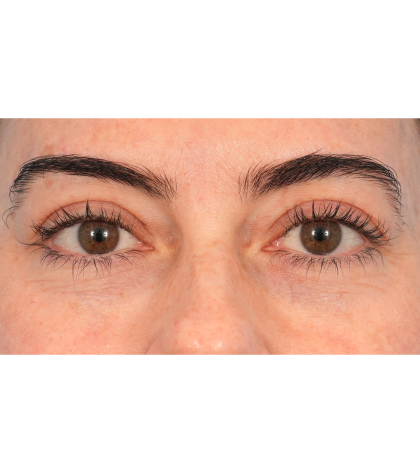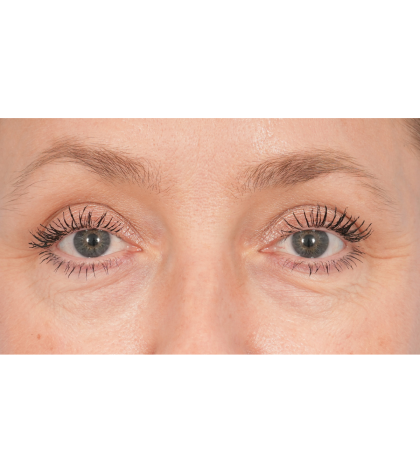Lower Blepharoplasty
Conveniently located to serve the areas of Chicago, IL

Lower blepharoplasty, also known as lower eyelid surgery or under-eye rejuvenation, is a transformative procedure that addresses the appearance of tired, puffy eyes and under-eye bags.
At Chicago Oculofacial Plastic Surgery, Dr. Paul Phelps is a renowned expert in lower blepharoplasty. With meticulous attention to detail and an individualized approach, Dr. Phelps specializes in achieving natural-looking results that enhance the overall aesthetics of the eyes and face.
If you have been struggling with under-eye bags, puffiness, or signs of aging around the lower eyelids, schedule a consultation at Chicago Oculofacial Plastic Surgery by calling (312) 888-5754 or by filling out an inquiry form. Dr. Phelps and his compassionate team are dedicated to providing exceptional care and delivering beautiful, natural-looking outcomes to help you restore confidence in your appearance.
Before and After Photos
Contents
- 1 Before and After Photos
- 2 About Blepharoplasty
- 3 Benefits of Lower Blepharoplasty
- 4 Candidates for Lower Blepharoplasty
- 5 Personal Consultation
- 6 Preparation
- 7 Lower Blepharoplasty Procedure
- 8 Recovery & Results
- 9 Corresponding & Complementary Procedures
- 10 Cost of Lower Blepharoplasty in Chicago
- 11 FAQ
- 12 References
About Blepharoplasty
Blepharoplasty is one of the most commonly performed facial cosmetic procedures, 85% of which are performed on women. upper blepharoplasty addresses sagging and excess tissue in the upper eyelids, lower blepharoplasty deals with puffiness and “bags” or hollowing in the lower eye region. Lower blepharoplasty may also address dark circles around the eyes. As we age, the delicate skin around our eyes can start to show signs of aging. The lower eyelids are particularly susceptible to changes such as orbital fat herniation, muscle laxity, and loss of elasticity. The skin of the lower eyelids is the thinnest in the body and aging or tiredness is more frequently identified in this region.
Fortunately, with a lower blepharoplasty, surgeons can effectively address these concerns, resulting in a refreshed and more youthful appearance. This surgical procedure targets the removal or repositioning of excess fat, tightening of muscles, and trimming of sagging skin to restore a smoother and more defined contour to the lower eyelids.
What is Transconjunctival Lower Blepharoplasty?
Unlike traditional blepharoplasty techniques that involve external incisions, the transconjunctival approach utilizes an internal incision made inside the lower eyelid, known as the conjunctiva. This means there are no visible scars, as the incisions are hidden within the natural contours of the eye. Dr. Phelps frequently performs complex eyelid rejuvenation such as the extended transconjunctival lower blepharoplasty with fat transposition with a CO2 laser.
Benefits of Lower Blepharoplasty
Lower blepharoplasty offers a comprehensive range of benefits to enhance the appearance and well-being of patients in Chicago and beyond. One of the primary benefits of lower blepharoplasty is the improved overall appearance of the eyes. By reducing under-eye bags and puffiness, this procedure can transform the eye area, providing a more rejuvenated and vibrant look. Additionally, the elimination or significant reduction of dark circles under the eyes helps combat signs of fatigue and aging, contributing to a more youthful and rested appearance.
Lower blepharoplasty combined with ancillary procedures (CO2 laser, RF Microneedling, chemical peels) can also address the texture of the skin underneath the eyes. By smoothing out wrinkles and fine lines. This procedure creates a smoother, more youthful under-eye area. This not only enhances the appearance but also improves the application of makeup, allowing for a more polished look.
Sometimes lower blepharoplasty can be combined with skin pinch excision or lateral canthoplasty to improve severe wrinkles, excess skin, or eyelid laxity. Other times midface volume may be required with fat grafting, mid face lift, or both.
The positive impact of lower blepharoplasty extends beyond aesthetics. Patients often experience increased self-confidence and an improved sense of well-being after the procedure. The rested and rejuvenated appearance achieved through this treatment can make individuals appear more energetic and vibrant, positively impacting their personal and professional lives.
Candidates for Lower Blepharoplasty
Candidates for lower blepharoplasty want to:
- Address the presence of excess skin and fat in the lower eyelids
- Reduce the appearance of under-eye puffiness
- Remove or reduce prominent fat pads
- Restore a more youthful and refreshed appearance to their eyes
Ideal candidates for lower blepharoplasty are generally in good overall health and have realistic expectations for the outcomes of the procedure. Candidates should consult with an experienced board-certified oculofacial surgeon such as Dr. Paul Phelps.
Personal Consultation
During your consultation with Dr. Phelps, he will thoroughly evaluate your unique concerns and discuss the most appropriate treatment options tailored to your specific needs. He will conduct a thorough examination of your lower eyelid area, including the skin, muscles, and fat deposits. By assessing the extent of any excess skin or fat and evaluating the condition of your underlying structures, Dr. Phelps can determine the most suitable approach for your unique situation.
It is important to note that while lower blepharoplasty is a commonly performed procedure, it may not be suitable for every patient. Dr. Phelps will provide expert guidance and recommend the best course of action tailored to your individual needs. He will explain the surgical process, including the incision techniques, fat repositioning, or removal, and the improvement you can expect.
Dr. Phelps understands that each patient has different goals and desires when it comes to their appearance. With his expertise and advanced techniques, he can customize a treatment plan that addresses your specific concerns, ensuring a harmonious balance between facial features and achieving optimal results.
Preparation
Patients will receive detailed instructions on how to prepare for lower eyelid surgery, these may include:
- History and physical exam by your primary care physician to ensure you are healthy for the chosen sedation level for your surgery.
- Medication review, including information about over-the-counter medications and supplements to avoid (e.g. aspirin and other blood thinners)
- Advice on the recommended limits for alcohol consumption both before and after surgery, as excessive alcohol intake can interfere with the healing process.
- An individualized recovery plan for each patient, outlining the post-operative care instructions, expected downtime, and any necessary follow-up appointments.
- Post-operative care instructions on how to care for your eyes and manage any discomfort or swelling following the surgery.
Lower Blepharoplasty Procedure
On the day of your surgery, you will receive either local anesthesia combined with light sedation (oral anxiety medication), moderate sedation (twilight anesthesia), or general anesthesia to ensure your comfort throughout the procedure. The choice of anesthesia will be discussed and decided upon during your consultation, taking into consideration factors such as your medical history and personal preference.
Transconjunctival lower blepharoplasty is unique in that the incisions are made on the inside of the lower eyelid, also known as the conjunctiva. This approach eliminates any visible external scarring, making it an ideal choice for younger patients who do not require skin excision. By carefully accessing the underlying fat herniation and excess tissue through an internal incision, Dr. Phelps can achieve precise and natural-looking results. When skin excision is required, the scar is carefully hidden underneath the lash line.
Once the incisions have been made, Dr. Phelps will skillfully remove or reposition any excess fat deposits that contribute to under-eye bags or puffiness. Additionally, if there is any sagging or laxity in the lower eyelid skin or muscle, it can be addressed and tightened during this stage of the procedure.
In certain cases, Dr. Phelps may combine lower blepharoplasty with the following additional procedures.
Lateral Canthopexy
Lateral canthopexy is a specialized procedure performed by oculofacial plastic surgeons. It addresses sagging concerns by tightening and repositioning the outer corner of the eye, known as the lateral canthus.
Canthoplasty of the medial or lateral canthus may be required in more severe cases. Consultation with Dr. Phelps can help you determine if these procedures may be required in your specific case.
Mid-Facelift
Lower blepharoplasty combined with a mid-facelift is a combination cosmetic procedure that targets multiple areas of concern to provide more comprehensive facial rejuvenation. Dr. Phelps can target sagging cheeks and restore volume to the midface region, lifting and repositioning the underlying structures, restoring youthful fullness to the cheeks, and enhancing overall facial harmony.
Fat Grafting
In certain cases, fat may be extracted from elsewhere in the body and broken down into small particles, called microfat, to be injected into the lower eyelid and cheek region. This is most frequently required in cases of maxillary retrusion. Maxillary retrusion is a condition where the cheek is positioned behind the anterior corneal surface. Maxillary hypoplasia can cause a negative vector relationship, where the globe is positioned in front of the malar eminence. Building up the midface with fat grafting may be required to enhance the lower eyelid appearance in these cases.
Recovery & Results
After the surgery, Dr. Phelps and his team will instruct you on how to care for your eyes and will follow up closely with your progress. It is normal to experience some discomfort and swelling during the initial stages of healing. Generally, patients can control any postoperative discomfort with cool compresses, Tylenol, or Advil. Please let Dr. Phelps’ team know if you would like a prescription for Celebrex, some patients prefer this for postoperative comfort. To minimize swelling, it is recommended to keep your head elevated, especially when resting or sleeping. This helps to improve blood circulation and reduce fluid buildup in the treated area. You may also want to consider purchasing lid-lift goggles from our office.
The results of lower blepharoplasty are designed to be long-lasting. With proper care and maintenance, the improvements achieved through this procedure can endure for many years, allowing you to enjoy your enhanced appearance for a lifetime.
Corresponding & Complementary Procedures
CO2 Laser Resurfacing
Frequently utilized to enhance the results of lower blepharoplasty, CO2 laser resurfacing works by utilizing advanced laser technology to precisely target the under-eye area, stimulating collagen production and promoting skin renewal. The laser energy gently removes the outer layers of damaged skin, revealing more youthful-looking skin underneath, and reducing the appearance of dark circles and wrinkles.
TCA Peel
A TCA peel is a highly effective way to achieve skin brightening and rejuvenation after lower blepharoplasty. This chemical peel involves the application of trichloroacetic acid (TCA) to the skin, which works to exfoliate and resurface the outermost layers of the skin. By stimulating the production of collagen and elastin, the TCA peel promotes cellular turnover and reveals fresher, more vibrant skin.
Radiofrequency Microneedling
In patients who are not good candidates for CO2 laser resurfacing or strong chemical peels, Dr. Phelps may recommend an RF microneedling procedure such as Morpheus8. This can help improve skin quality and tighten the skin to help minimize wrinkles and skin laxity after surgery.
Cost of Lower Blepharoplasty in Chicago
The cost of lower eyelid surgery can vary depending on various factors. The price of lower eyelid blepharoplasty at our practice starts at $6,000, including the surgical procedure and one hour of twilight sedation. At Chicago Oculofacial Plastic Surgery, we understand that each patient has unique needs and goals for their cosmetic journey. That is why we offer personalized treatment plans tailored to your specific requirements.
To learn more about the cost of blepharoplasty and explore your options, we invite you to contact our practice at (312) 888-5754. Our friendly and knowledgeable staff will be happy to assist you and schedule your consultation with Dr. Phelps at our convenient location in Chicago.
FAQ
What is the difference between an upper eyelid lift and a lower eyelid lift?
An upper eyelid lift focuses on rejuvenating the appearance of the upper eyelids by removing excess skin, tightening loose muscles, and enhancing the overall contour. On the other hand, a lower eyelid lift targets issues such as under-eye bags, puffiness, and wrinkles in the lower eyelid area. Depending on your specific concerns, you may benefit from either an upper eyelid lift, a lower eyelid lift, or both procedures combined.
Is lower blepharoplasty covered by insurance?
As lower blepharoplasty is considered a cosmetic procedure, it is not covered by insurance. Conversely, if upper blepharoplasty is deemed medically necessary, such as in cases of impaired field of vision, there is a possibility that insurance may provide coverage.
How long is the recovery time after blepharoplasty?
The recovery time for blepharoplasty varies from patient to patient. Generally, patients can expect some bruising and swelling in the treated area, which gradually subsides within a week or two. Most individuals can resume normal activities within 10 to 14 days after the surgery. We generally consider patients to be “wedding ready” at about 6 weeks after surgery. Typically, final results can be seen around 3 to 6 months after surgery.
Are there non-surgical alternatives to lower blepharoplasty?
While blepharoplasty is the most effective solution for significant lower eyelid rejuvenation, there are non-surgical alternatives that can provide temporary improvements. Treatments such as laser resurfacing can address certain concerns like fine lines and dark circles around the eyes. However, these non-surgical options do not offer the same degree of correction as blepharoplasty and their results are temporary. These treatments may be used in conjunction with surgery to augment results.
References
- Khanna S, Phelps PO. The basics of baggy eyelids. Disease-a-Month. Published online July 2020:101037. doi:https://doi.org/10.1016/j.disamonth.2020.101037
- Rostami S, de la Torre JI, Czyz CN. Lower Eyelid Blepharoplasty. PubMed. Published 2021. https://www.ncbi.nlm.nih.gov/books/NBK448181/
- Labib A, Patel BC, Milroy C. Blepharoplasty, Lower Lid, Canthal Support. PubMed. Published 2023. Accessed January 19, 2024. https://www.ncbi.nlm.nih.gov/books/NBK576422/
- Wong CH, Mendelson B. Extended Transconjunctival Lower Eyelid Blepharoplasty with Release of the Tear Trough Ligament and Fat Redistribution. Plastic and Reconstructive Surgery. 2017;140(2):273-282. doi:https://doi.org/10.1097/prs.0000000000003561
- Karimi N, Mohsen Bahmani Kashkouli, Shayesteh Enayatollahi, Hossein Ghahvehchian, Parya Abdolalizadeh, Ramadan M. Minced Free Fat Graft Versus Pedicle Fat Flap to Efface Orbital Rim Hollow in Lower Blepharoplasty. Aesthetic Surgery Journal. 2023;44(1):12-19. doi:https://doi.org/10.1093/asj/sjad232
- Kim YJ, Lee KH, Choi HL, Jeong EC. Cosmetic Lateral Canthoplasty: Preserving the Lateral Canthal Angle. Archives of Plastic Surgery. 2016;43(04):316-320. doi:https://doi.org/10.5999/aps.2016.43.4.316
